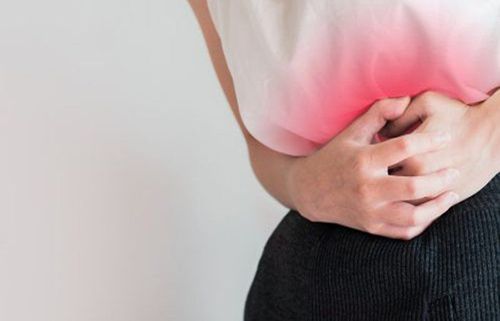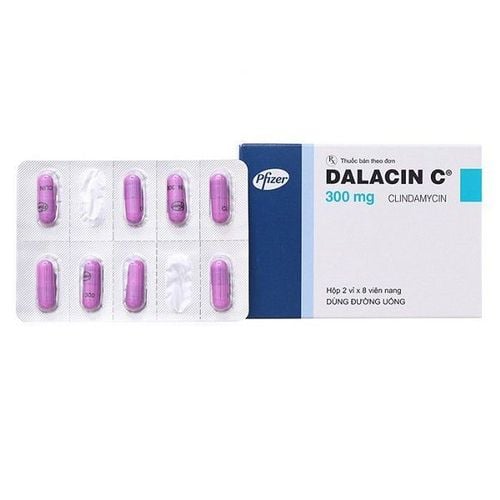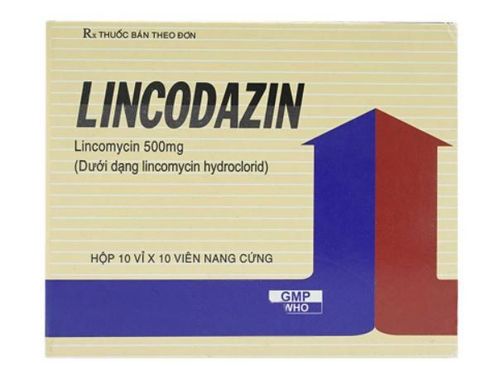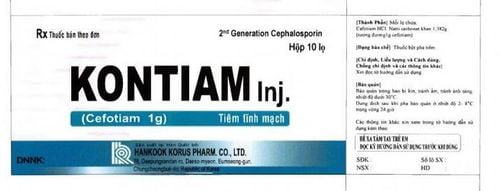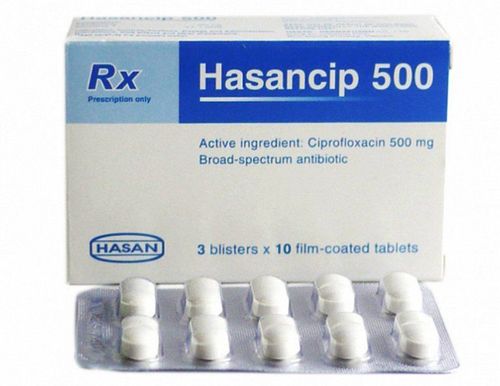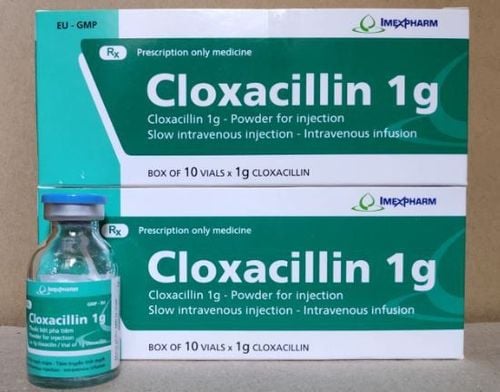This is an automatically translated article.
The article was professionally consulted by Specialist Doctor I Le Thi Phuong - Department of Obstetrics and Gynecology - Vinmec Ha Long International Hospital. Dr. Le Thi Phuong has 29 years of experience in the field of obstetrics and gynecology.Peritonitis is one of the serious infectious complications after surgery, especially obstetric surgery. Without prompt treatment, peritonitis can spread into the bloodstream (sepsis) and other organs, leading to multiple organ failure and death.
1. What is peritonitis?
Peritonitis is an inflammation of the thin layer of tissue that covers the inside of the abdomen and most of the internal organs. Peritonitis is generally classified as:
Primary peritonitis: no visceral involvement, caused by bacteria entering the abdomen from the bloodstream or gastrointestinal tract without an obvious source. About 10 - 30% of patients with cirrhosis and ascites develop primary peritonitis with a mortality rate of about 25%; Secondary peritonitis: As a result of internal organ inflammation such as appendicitis, diverticulitis, with or without perforation of the viscera, infectious complications of abdominal surgery, obstetric and gynecological surgery (postoperative peritonitis) gynecology ),... and need surgical treatment; Recurrent peritonitis: Recurrence of infection after adequate treatment of peritonitis, is common in patients with comorbidities or immunocompromised individuals. In obstetrics and gynecology, two common types are secondary peritonitis and recurrent peritonitis.
In addition, if classified based on the extent of postpartum infection, there are 2 types of peritonitis: pelvic peritonitis (inflammation not localized to the lining of the uterus but growing into the uterus and forming pseudomembranous tissues). visceral viscera, causing adhesions) and generalized peritonitis.
2. Causes of peritonitis
Bacterial peritonitis: Aerobic bacteria (Lactobacillus, Streptococcus, Diphteroides, Staphylococcus, E.coli, Enterococcus), anaerobic bacteria (Bacteroides, Clostridia); Postoperative peritonitis secondary to intraoperative infection, cesarean section infection, hysterectomy, injury to the bladder, ureters, intestines, post-operative removal of placenta, control of uterus, spread of bacteria overflow from tubal pus,...; Recurrent peritonitis is usually caused by Enterobacter, Pseudomonas, Enterococcus, Staphylococcus and Candida bacteria; Peritonitis after pelvic surgery is often caused by many types of bacteria, 60% are anaerobic bacteria, 20% are Gram (+) aerobic cocci and 20% are Gram (-) aerobic bacilli; Infections in the first 24 hours after surgery are usually caused by Gram (+) cocci, sometimes by Gram (-) bacilli; Infections after the first 48 hours are usually caused by anaerobic bacteria.
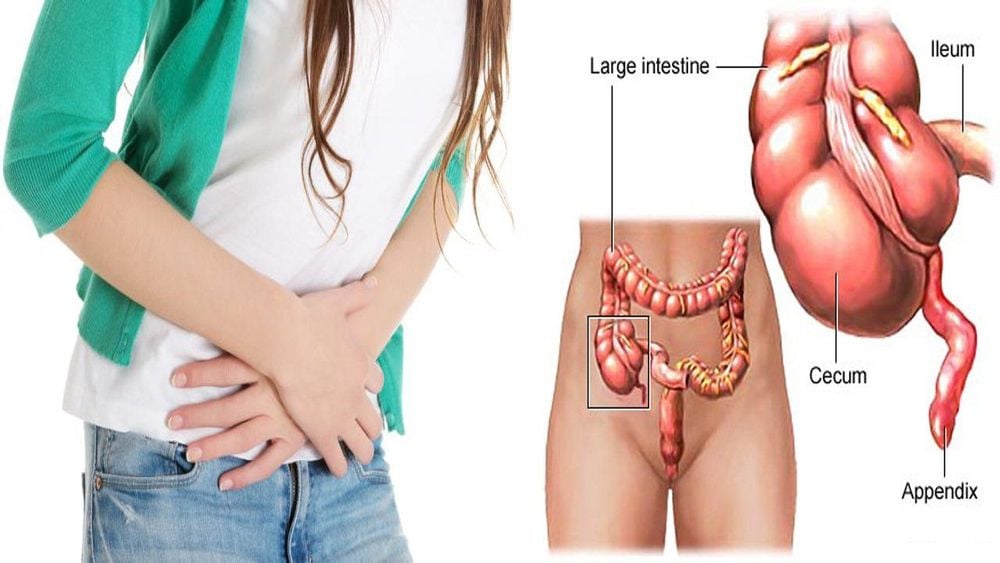
3. Risk factors for postpartum peritonitis
3.1 Due to the patient
Malnutrition, low economic conditions; Having a medical disease such as liver, kidney, diabetes,...; Anemia Hb < 12 g%; Older age, obesity; Have an old incision; The longer the hospital stay before surgery, the higher the risk of infection; Prolonged labor and rupture of membranes increase the risk of postpartum infection. 3.2 Due to surgery Complicated surgery, long surgery time, risk of infection increases 2 times after every hour of surgery even in case of clean incision; Surgery with a lot of blood loss, hematoma, many necrotic tissues; Failure of prophylactic antibiotics; Surgery in the operating room infected, emergency surgery for infection increased 2 times.4. Symptoms of peritonitis after obstetric surgery
Rapid pulse, fever over 38 degrees Celsius, rapid shallow breathing, low blood pressure; Chills, fatigue, sunken eyes, pale skin, cold limbs; Abdominal pain, bloating, nausea and vomiting; There are times when defecation is loose, sometimes constipated or unable to defecate, unpleasant smell; Anorexia, thirst, little urine, dry lips, dry skin, decreased skin elasticity due to dehydration and electrolytes; Severe symptoms: Lethargy, semi-coma. If not treated promptly, peritonitis can spread rapidly into the bloodstream (sepsis) and other organs, causing multiple organ failure and death.
5. Treatment of peritonitis after obstetric surgery
The earlier it is detected, the easier it is to treat. Therefore, as soon as signs of peritonitis are detected, the patient should immediately go to the hospital for examination and timely treatment.5.1 Principles of treatment Intensive resuscitation; Using broad-spectrum antibiotics, combining multiple antibiotics; Exploratory emergency surgery, collection of infection, abdominal lavage and drainage. 5.2 Intensive resuscitation Insert a nasogastric tube to reduce intestinal distention; Give oxygen if the patient finds it difficult to breathe; Replace electrolytes, avoid secondary systemic disorders; Albumin infusion 1.5g/kg on the first day, then 1g/kg on the third day for secondary peritonitis to prevent hepatorenal syndrome; Insert a Foley catheter to monitor urine output. 5.3 Use of antibiotics Use broad-spectrum antibiotics and a combination of antibiotics as soon as infection is suspected, and the peritoneal fluid has polymorphonuclear leukocytes ≥ 250/mm3. Adjust antibiotics according to the results of the antibiogram; Secondary peritonitis: Use antibiotics to cover anaerobic, aerobic Gram (-) and other opportunistic bacteria; Possible antibiotics include: Cefotaxime, Ceftriaxon, Ampicillin-sulbactam, Quinolones (Norfloxacin, Ofloxacin, Ciprofloxacin), Metronidazole, Cefotetan, Ticarcillin-Clavulanate, Piperacillin-Tazobactam, Ampicillin-Sulbactam, Imipenem,... with dosages. as directed by the doctor. 5.4 Surgery Emergency laparotomy: Cleanse the site of infection, clean the abdominal cavity and drain it. Attention should be paid to the hepatosplenic cavity to avoid residual abscess later; If peritonitis after cesarean section is caused by an infection of the uterine myometrium, caution should be taken when deciding to preserve it because the risk of recurrent peritonitis is quite high. 5.5 Care and nutrition Fasting, drinking; Parenteral feeding; Balance water and electrolytes; Feed only after bowel sounds or when the patient is able to defecate; Withdrawal of drainage ≥ 4 days after surgery.

5.6 Prophylaxis Prepare the patient well before surgery, complete aseptic procedures; Prophylactic antibiotic use in obstetric and gynecological surgery; Cases of difficult surgery, adhesion, ascites fluid from before surgery, heavy bleeding, difficult to stop bleeding, ... should put drainage of cutting apex or through the pelvic cavity; In surgery, caution should be exercised when using an electrocautery machine because damage may occur 1-2 weeks after surgery; Postoperative monitoring should pay attention to symptoms such as fever, abdominal pain; For cases after cesarean section, it is necessary to carefully monitor the recovery of the uterus, the color and smell of the discharge. If there is a smell of discharge, there is an infection in the uterus, it is necessary to check and give uterine contraction drugs to avoid stagnation of fluid, reduce the risk of caesarean section rupture and peritonitis; For cases of hysterectomy, if there is a fever after surgery, it is necessary to carefully check for blood in the vaginal apex. If in doubt, ultrasound examination and removal of the apex should be performed on the 3rd postoperative day to drain the blood and fluid stasis, to avoid spreading infection and causing peritonitis. Peritonitis after obstetric surgery is a dangerous complication that needs to be handled as soon as possible. Therefore, when there are signs of peritonitis, the patient should immediately go to the hospital for examination and appropriate treatment plan.
Vinmec International General Hospital is one of the hospitals that not only ensures professional quality with a team of leading medical doctors, modern equipment and technology, but also stands out for its examination and consultation services. comprehensive and professional medical consultation and treatment; civilized, polite, safe and sterile medical examination and treatment space.
Please dial HOTLINE for more information or register for an appointment HERE. Download MyVinmec app to make appointments faster and to manage your bookings easily.





